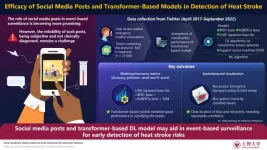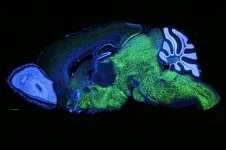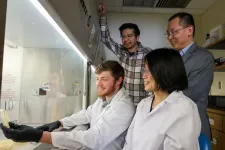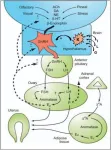Heat stroke poses a significant health risk, especially during extreme temperature conditions. As global temperatures rise due to climate change, the frequency and severity of heatwaves have increased, putting vulnerable populations at greater risk. This shift underscores the need for effective, real-time methods for early detection and response to heat stroke risks, ensuring timely intervention and reduced impact of these rising threats. While previous studies have highlighted the potential of social media posts, such as tweets, to offer real-time insights into various events, its application in detecting heat stroke risks had not been explored.
To address this gap, a team of researchers, led by Professor Sumiko Anno from the Graduate School of Global Environmental Studies, Sophia University, Japan, along with Dr. Yoshitsugu Kimura, Yanagi Pearls, Japan, and Dr. Satoru Sugita, Chubu University, Japan, harness the potential of combining social media posts and transformer-based learning models to detect heat stroke risks in Nagoya City, Japan. Their findings were published in Scientific Reports on January 4, 2025.
The researchers utilized transformer-based deep learning models, including BERT, RoBERTa, and LUKE Japanese base lite, along with a machine learning model (support vector machine or SVM) to identify tweets containing the word "hot" in Japanese. The team successfully collected about 27,040 tweets over a five-year period using the Twitter API. By preprocessing the text data and applying advanced deep and machine learning techniques, the models were trained and fine-tuned to identify tweets related to heat stroke events. These models were evaluated using key performance metrics such as accuracy, precision, recall, and F1-score.
Among the models tested, LUKE Japanese base lite achieved the highest performance metrics with an accuracy of 85.52%, followed by BERT-base (84.04%) and RoBERTa-base (83.88%). Whereas, the SVM baseline model showed the lowest performance, with an accuracy of 72.73%.
Additionally, the use of time-space visualizations and animated video showcased the potential for real-time event-based surveillance. Through mapping the locations of heat stroke-related emergency medical evacuations and matching them with geo-tagged tweets, the study demonstrated how social media data could provide an early warning system for heat stroke risks in urban environments.
Prof. Anno explains, “By leveraging social media posts, we can enhance public health surveillance systems and facilitate the early detection of heat stroke risks. Our findings emphasize the importance of real-time data monitoring to combat the health challenges posed by climate change.”
The research highlights the potential of combining Japanese tweets and transformer-based pretrained language models for public health surveillance. LUKE’s superior performance in detecting heat stroke-related tweets suggests its viability in monitoring heat stroke risks during heat waves. Moreover, the time-space visualizations demonstrated how social media could be integrated with emergency response data to serve as an effective early detection tool for extreme weather events.
This research opens the door to future applications of deep learning and social media posts for real-time health monitoring systems. As climate change intensifies, the ability for early detection and response to heat stroke risks could become a crucial tool in safeguarding public health. Looking ahead, the team plans to establish an early warning system for heat stroke in Aichi Prefecture, with the aim of eventually expanding this system to a nationwide alert system for Japan. Key steps in achieving this will involve collaboration with local authorities to collect heat stroke data and conducting spatiotemporal analyses across all prefectures. “Our methodology can be extended and adapted for monitoring emerging and reemerging infectious diseases, broadening its application in public health surveillance,” concludes Prof. Anno.
Reference
■Title of original paper
Using transformer-based models and social media posts for heat stroke detection
■Journal
Scientific Reports
■DOI
10.1038/s41598-024-84992-y
■Authors
Sumiko Anno1, Yoshitsugu Kimura2, and Satoru Sugita3
■Affiliations
1Graduate School of Global Environmental Studies, Sophia University, Japan, 2Yanagi Pearls, Japan, 3Chubu Institute for Advanced Studies, Chubu University, Japan
About Sophia University
Established as a private Jesuit affiliated university in 1913, Sophia University is one of the most prestigious universities located in the heart of Tokyo, Japan. Imparting education through 29 departments in 9 faculties and 25 majors in 10 graduate schools, Sophia hosts more than 13,000 students from around the world.
Conceived with the spirit of “For Others, With Others,” Sophia University truly values internationality and neighborliness, and believes in education and research that go beyond national, linguistic, and academic boundaries. Sophia emphasizes the need for multidisciplinary and fusion research to find solutions for the most pressing global issues like climate change, poverty, conflict, and violence. Over the course of the last century, Sophia has made dedicated efforts to hone future-ready graduates who can contribute their talents and learnings for the benefit of others, and pave the way for a sustainable future while “Bringing the World Together.”
Website: https://www.sophia.ac.jp/eng/
About Professor Sumiko Anno from Sophia University
Dr. Sumiko Anno is a Professor at the Graduate School of Global Environmental Studies and Graduate Degree Program of Applied Data Sciences at Sophia University. She holds a Master of Public Health from New York Medical College and a Doctor of Medicine from Kobe University. Dr. Anno’s research focuses on environmental health science, spatial information science, machine learning and deep learning techniques and big data. She has received numerous awards, including the Miyaji, Koichi Memorial Award, and has published extensively on topics such as dengue fever prediction, COVID-19 dynamics, and zoonotic disease forecasting.
END



